1. Introduction
Your car is comprised of various parts, and every one is essential to how it functions. Since these parts cooperate so well, your car can move starting from one place and then onto the next. Despite the fact that you might realize these parts are significant, you may not know how they work. Knowing the intricate details of your car will make you a more educated consumer, which will prove to be useful when the time arrives to take it in for maintenance.
What are the Different Parts of the Car?
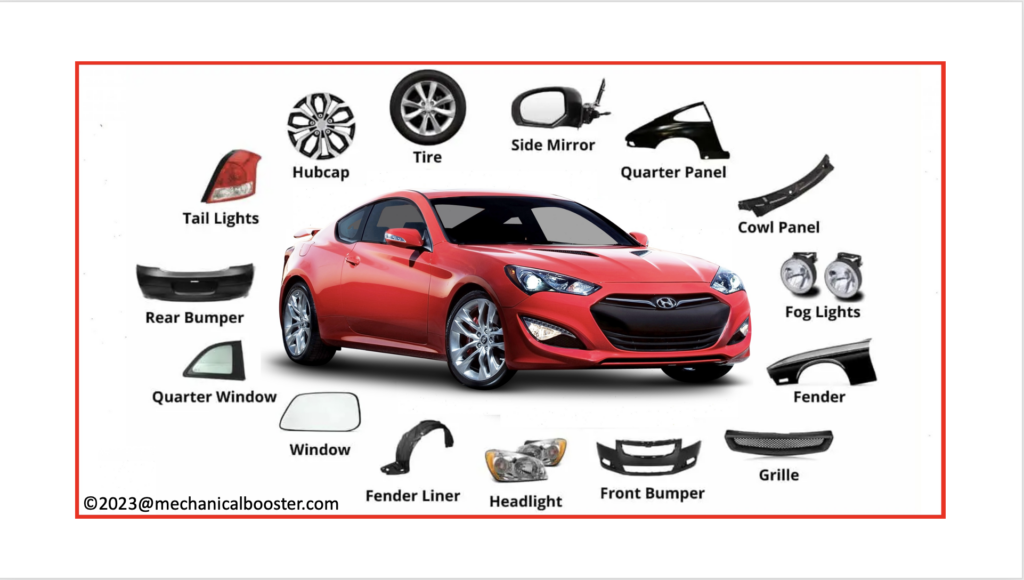
Below we will discuss the main parts of the cars:-
1. Car Lights
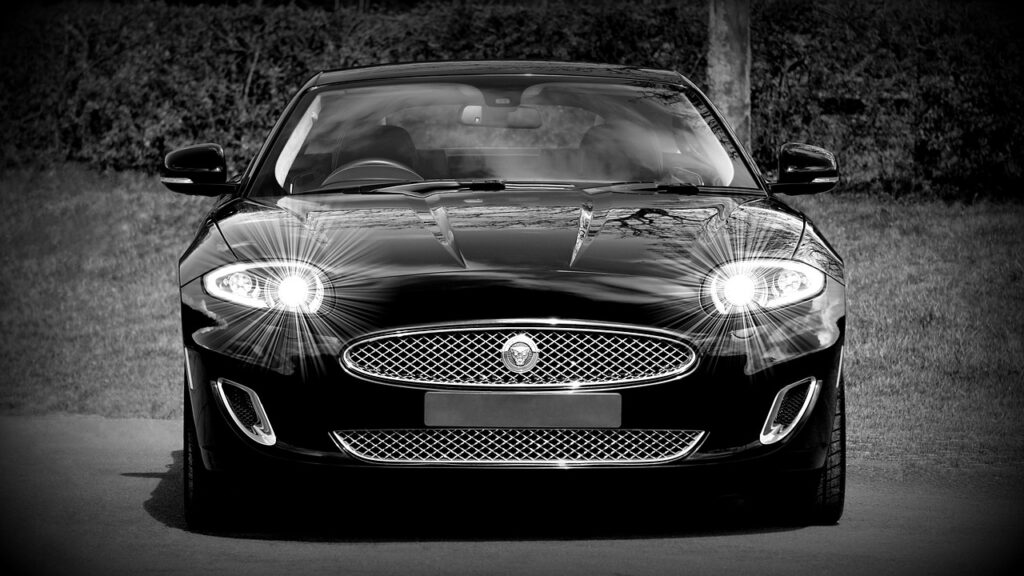
Car lights are one of the essential parts of any car. it’s critical to know about each of the lights of the car and how to utilize them, particularly while driving around evening time, in the rain or fog.
- The purpose behind Daytime running lights isn’t to enlighten the view in front of your car. All things considered, they make your car more visible to the drivers and people on foot you’re approaching.
- Low beam headlights are essential while driving around evening time, however, they have additionally been proven to further improve safety as well as visibility when utilized during the day.
- Full-beam headlights give an extreme, centered-weighted dissemination of light with a lot of glare. They ought to be utilized when it is difficult to see and there could be no other cars apparent in any direction.
- Fog lights are typically placed low on the front of the car, close to the front bumper. Fog lights are utilized to cut or slice through the fog and give you greater visibility on the road.
- Taillights are the red lights on the rear of your car that turn on automatically at whatever point your headlights are on. They let drivers coming up behind you know that you’re there and the way in which a long way ahead you are.
- Signal lights otherwise called blinkers, or signals, are located at the front and back of the vehicle. They are utilized to tell different drivers you are planning to turn and will most likely need to slow down to turn.
- Brake lights let different drivers know that you’re slowing down. As they possibly turn on when you apply the brakes.
- Hazard lights are likewise utilized as warning lights, otherwise called hazard warning lights. At the point when the hazard lights are turned on, they flash to warn or caution different drivers of distress or traffic issues.
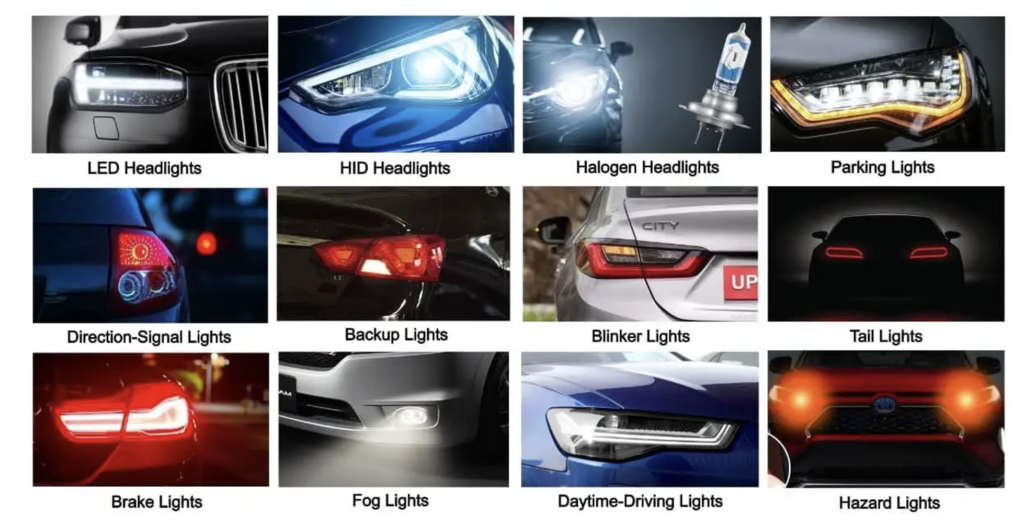
2. Chassis:-
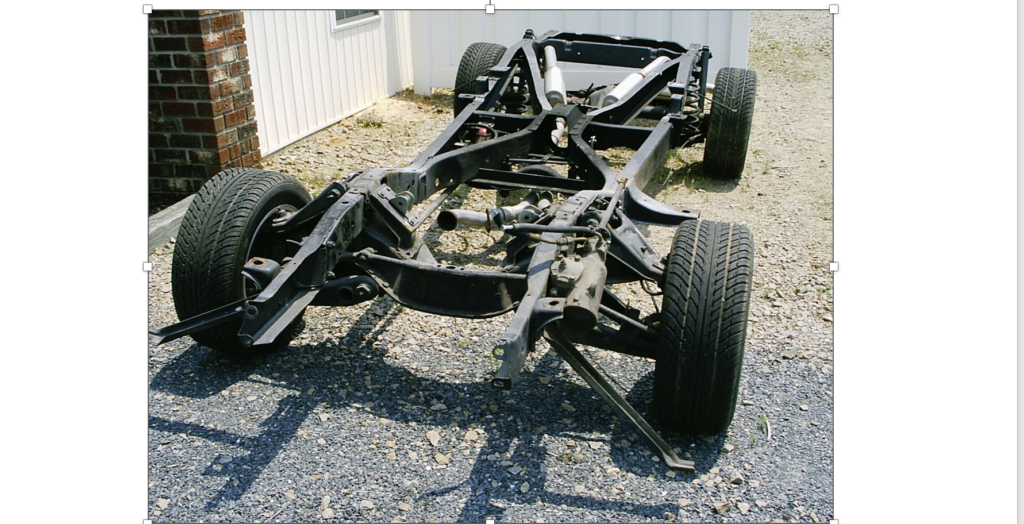
The chassis is the frame or structural of the vehicle on which all the parts of the vehicle are mounted. It is the essential structure of the car without the body. The chassis provide rigidity to the vehicle structure. The chassis of an car comprises of the frame, suspension system, axles, and wheel as the primary parts.
3. Engine:-
The engine is the core or center of your car. A complicated machine utilizes the heat from burning gas to turn the wheels on the road. This goal is reached by a progression of reactions that are set in motion by a spark. The spark ignites a combination of gasoline vapor and compressed air inside a cylinder that has been sealed or fixed briefly and makes it burn rapidly.
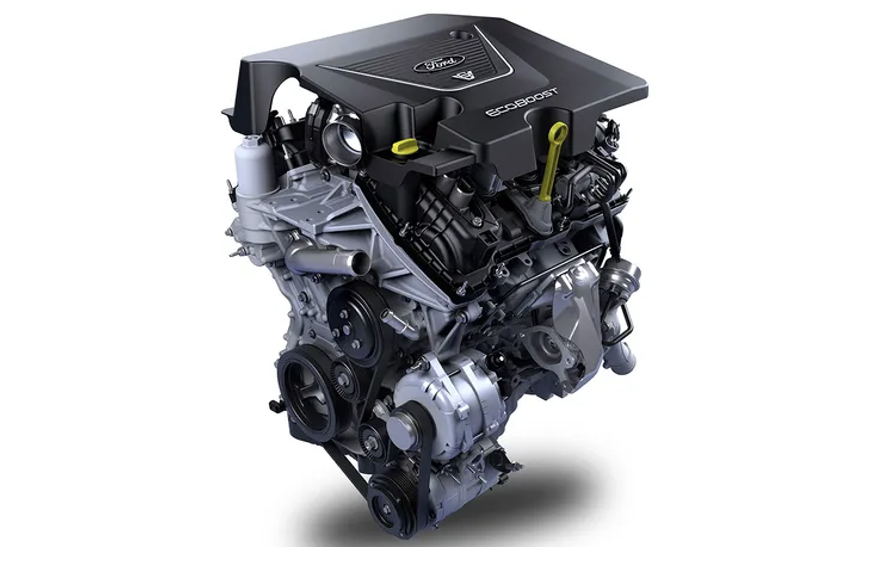
4. Body:-
The body part of vehicle utilization of a different frame to which the body structure is connected is out of date with the exception of certain applications for heavy-duty business vehicles. All the assembly units of the vehicles are attached to the body which additionally goes about as the frame, this is because of development in spot welding and sheet pressing techniques.
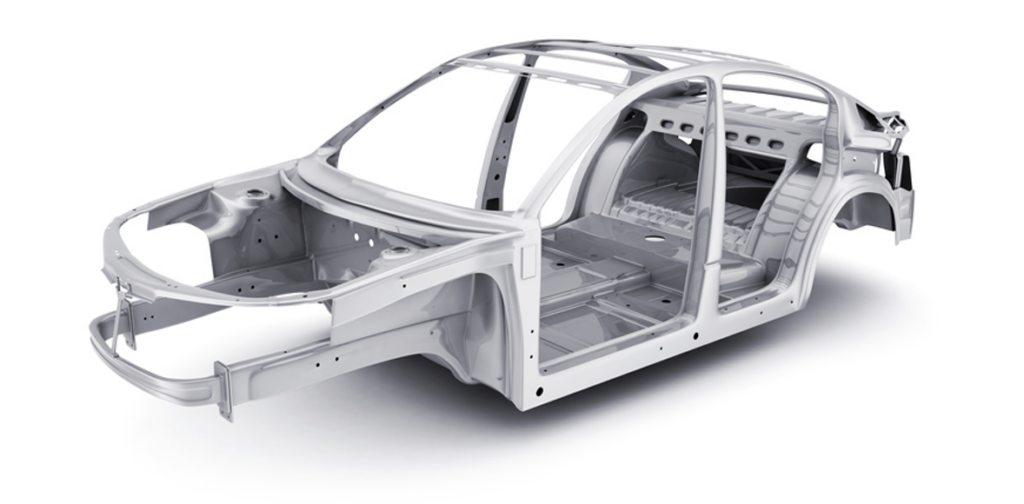
5. Power Train:-
The powertrain encompasses each part that converts or changes the engine’s power into movement. It is comprised of the clutch, the transmission (a bunch of gears that assist the engine turn to move the car), the drive shaft, the differential, and the rear axle.
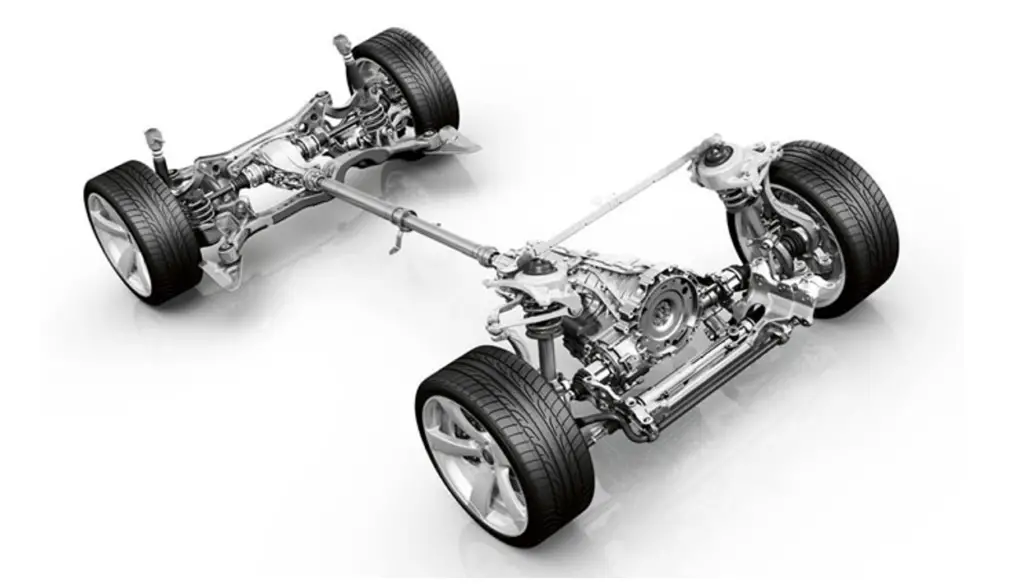
5. Transmission:-
The principal role of the transmission is to change how much torque the engine sends to the wheels as needs to be. You can accomplish this by adjusting the gear ratio between the drive shaft and the engine output shaft. The gearbox of a car is known as the transmission.
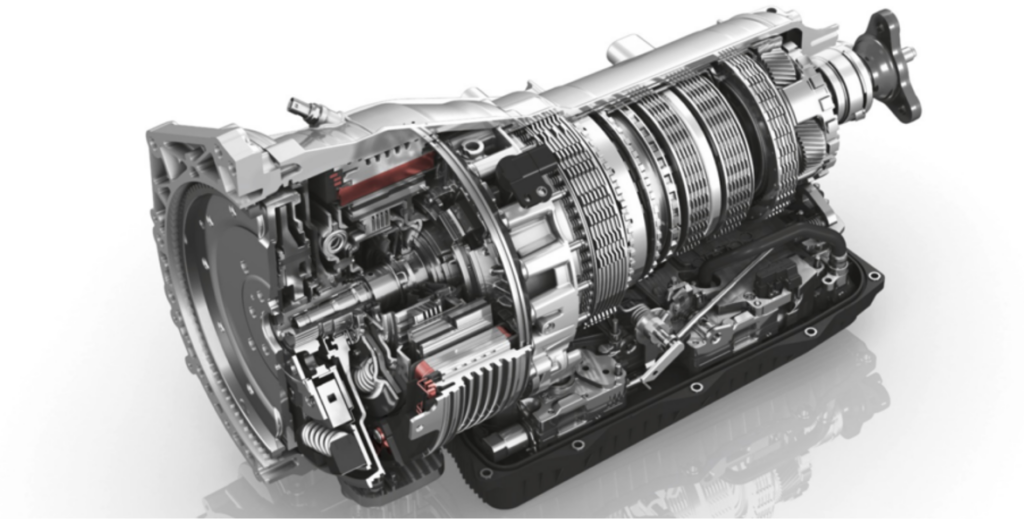
6. Battery:-
The is an essential parts of the cars. It stores chemical energy so it tends to be transformed into electricity to power the electrical parts of your car. The car battery is likewise a fundamental part of car function as the need might have arisen for every one of the electrical parts to work. It keeps the electric current consistent in the circuit by stabilizing the voltage.
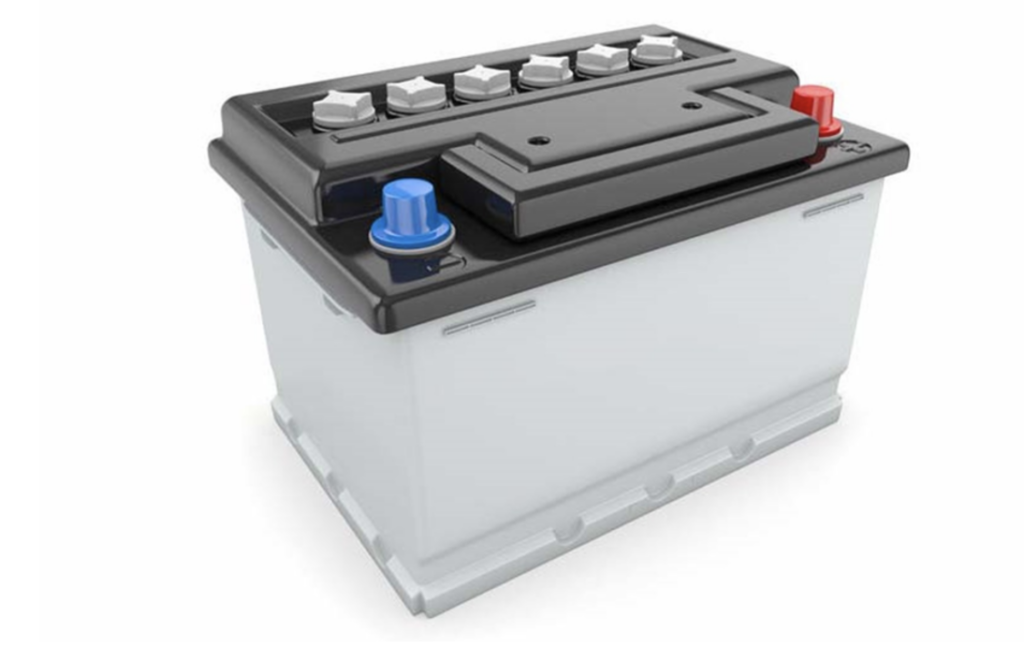
7. Alternator:-
The battery and alternator both work together. The battery gives the car the electricity it needs to begin when it’s turned off. The alternator keeps the car running. The alternator additionally keeps the battery charged so that when you turn off the vehicle, it tends to be started once more.
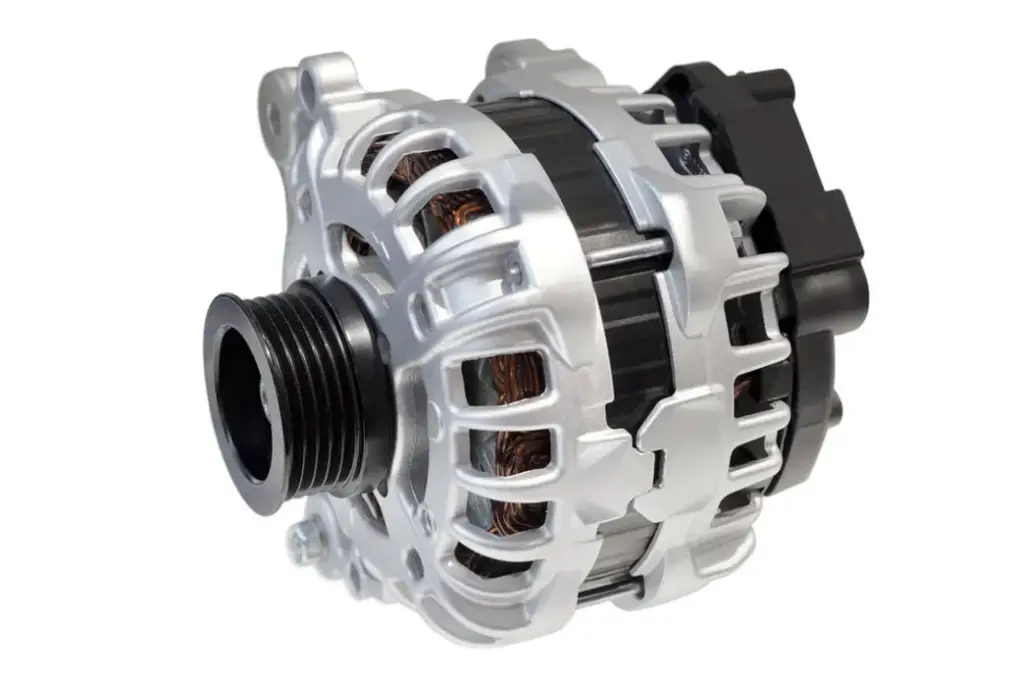
8. Radiator:-
A radiator assists in cooling down the engine when it gets excessively hot. It is essential for the cooling system for the engine, which likewise has a liquid coolant, hoses to move the coolant around, a fan, and a thermostat that really checks the temperature of the coolant.
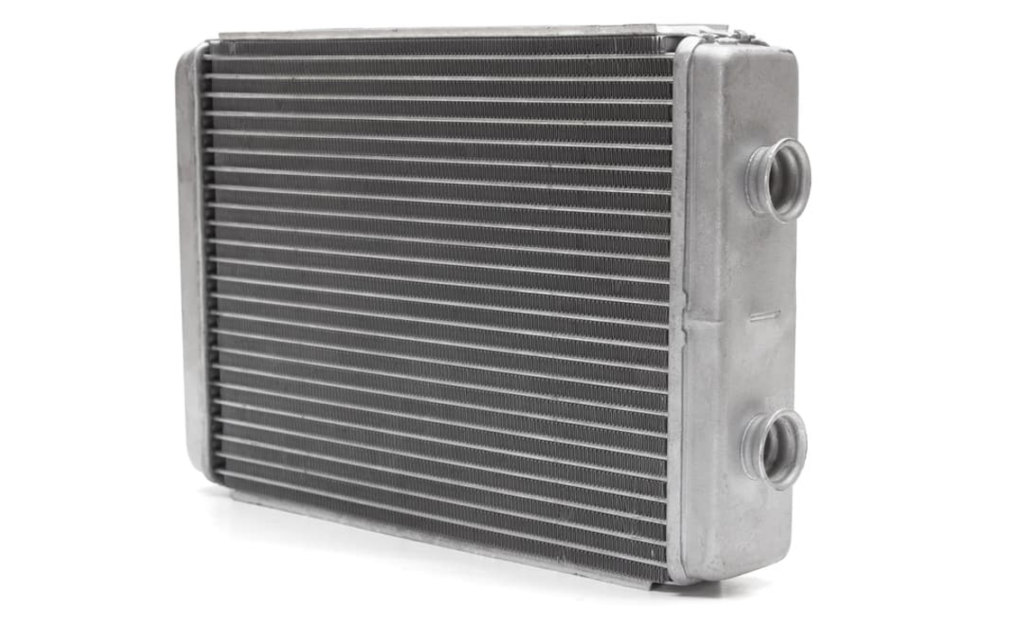
9. Suspension:-
The suspension system is vital for keeping the tires in ideal contact with the road and for retaining obstacles. It likewise keeps the car and any freight or luggage from getting damaged.
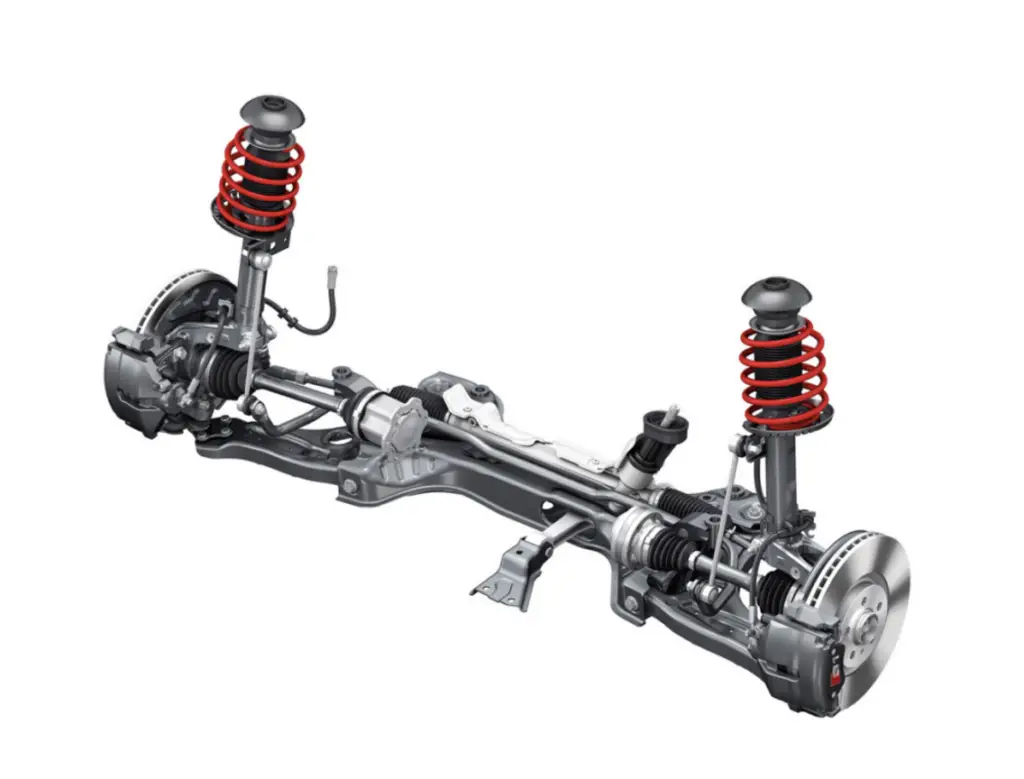
10. Axles:-
An axle is a rod or shaft that connects or interfaces a couple of wheels to move them and hold the position of the wheels to each other. There are two axles through which the wheels out and about get the drive they need. The Front axle is toward the front of the car and helps steer it and assimilate shocks from the uneven road surface while the axle is between the differential and the wheels that move the car. It sends power from one to the next.
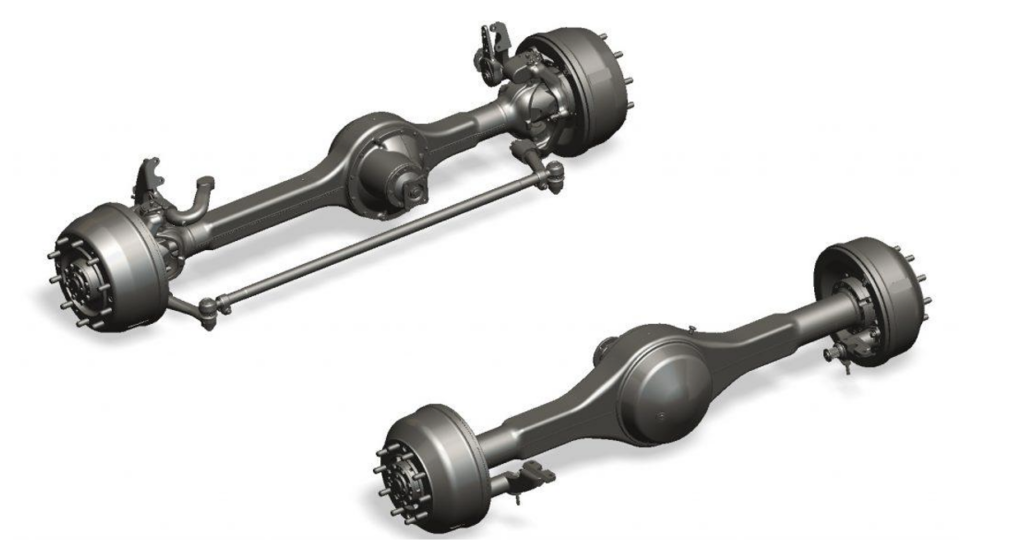
11. Brakes:-
Your car’s brakes assist you with slowing down and stopping, and they likewise keep your car in place when you park it. The brake likewise needs to keep the vehicle fixed or stationery when the driver isn’t there and when the vehicle is located on an incline.
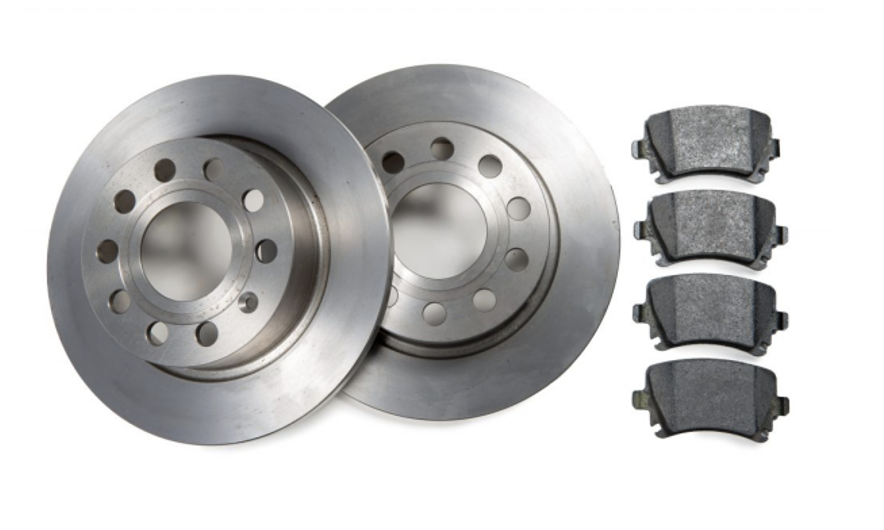
12. Catalytic Converter:-
A catalytic converter is a fundamental part of a car’s exhaust system. It helps bring down the number of toxic pollutants discharged into the air by converting hazardous combustion gases into less harmful substances, similar to water vapor and carbon dioxide.
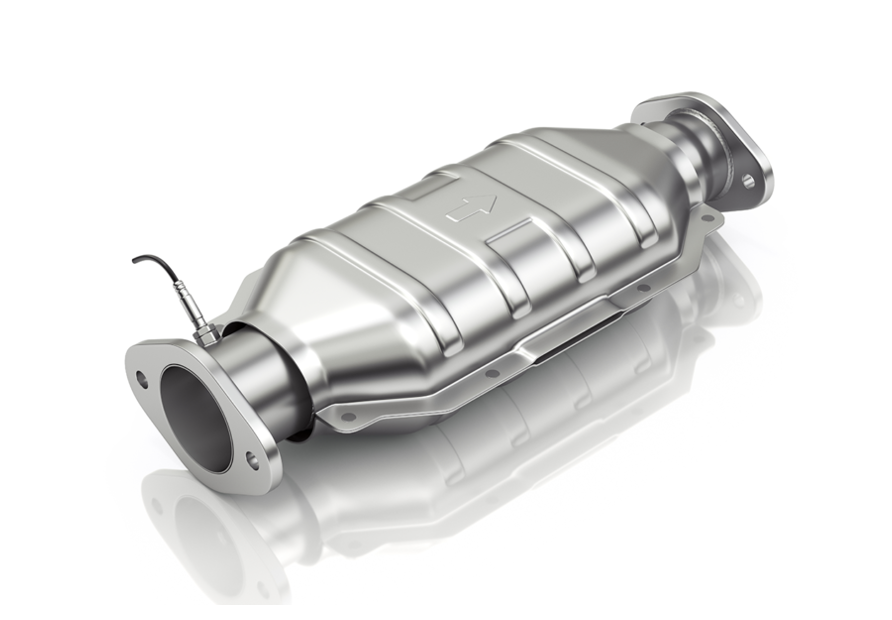
13. Muffler:-
Mufflers are essential for a vehicle’s exhaust system and are normally positioned at the rear of the vehicle. It eliminates the noise made by the engine when it burns or consumes fuel.
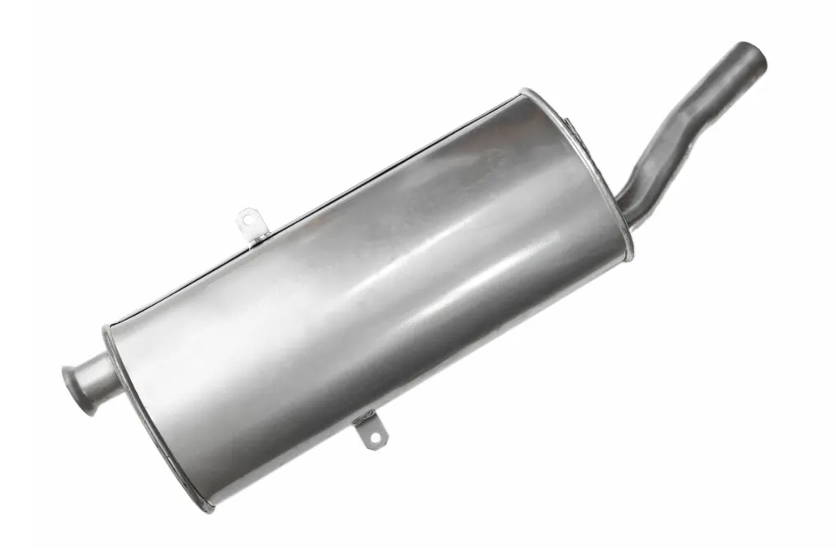
14. Fuel Tank:-
A Fuel tank is a part of the engine system which is utilized to store flammable fluids and release them into an engine. It is for the most part located under the middle segment of the car. This tank can be filled from an external perspective through a small hole that is covered with a gas cap when not being used.
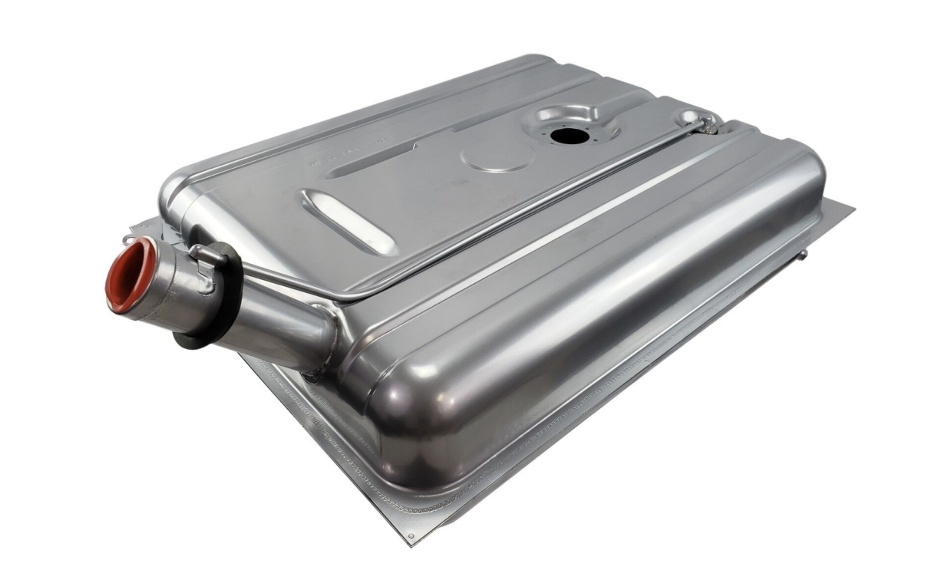
15. Seat belt:-
A seat belt is a safety gadget, a belt that is designed to secure any occupant of the vehicle against undesirable movements that might be caused during a collision. It assists with keeping the occupants positioned securely and prevents the traveler from being thrown away from the vehicle on impact.
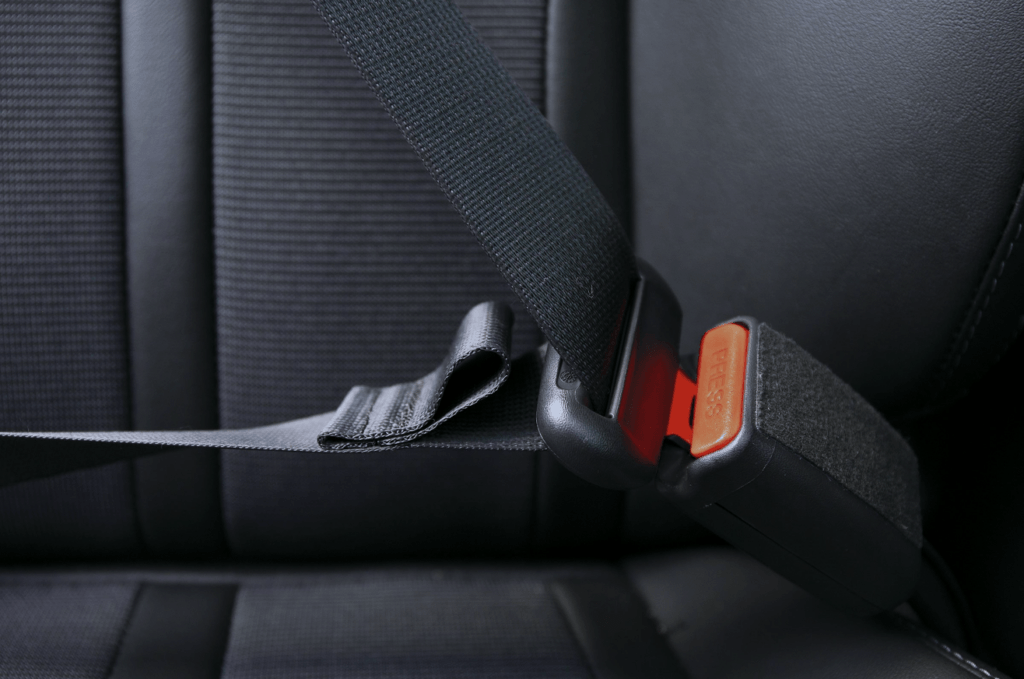
16. Shock Absorbers:-
The suspension is comprised of many parts, and the shock absorbers are a significant part of this system. Shock absorbers assist with keeping your car consistent while you’re driving. The primary job of the shock absorbers is to ensure that your tires generally touch the road.
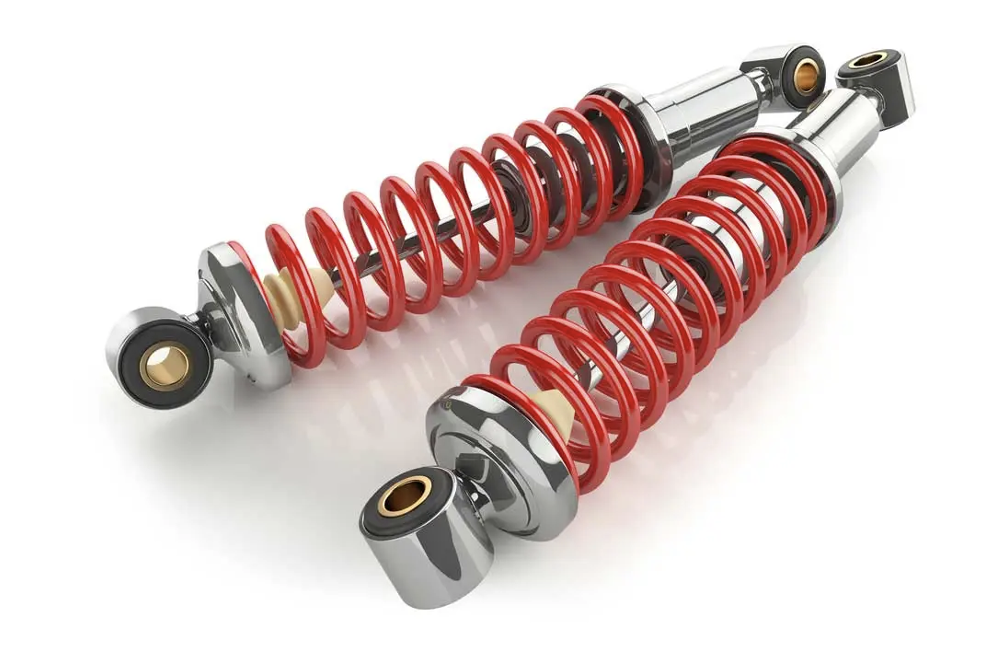
17. Steering System:-
The steering system is utilized to turn the car in somewhere at a different position. The main thing about a steering system is that it is precise and simple to utilize and that the front wheels will generally return to confronting straight ahead after a turn. The steering system makes it conceivable to steer the car or turn it to the left or right.
18. Lubrication System:-
Moving parts or components develop wear ultimately as they move along one another. A lubricant is circulated between these moving parts so the parts move over one another with minimal friction. This aids in diminishing the power loss because of friction. The lubricants likewise go about as a coolant themselves. These are exceptionally viscous fuels that are suited to work at high temperatures and pressure.
19. Cooling System:-
The cooling system is designed with the end goal that the engine neither overheats nor overcooks. This rise in temperature straightforwardly affects how well the engine functions and how lengthy its parts last. The cooling system includes parts like a radiator, cooling fan, coolant, and an indoor regulator that monitors or screens the temperature of the coolant.
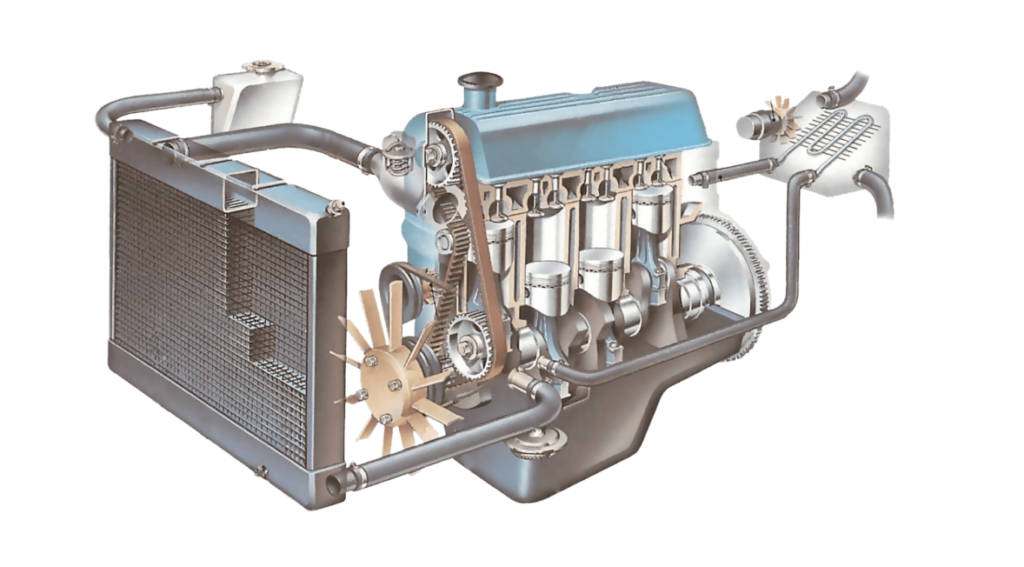
20. Ignition System/ Spark Plugs:-
The ignition system is liable for self-starting the car utilizing the either combustion of an air-fuel combination or a high-voltage spark. It functions as fast or slowly as the engine turns each moment. The ignition system’s responsibility is to assist the fuel with consumption by sending a high-voltage spark or letting the fuel ignite itself in every cylinder at the right time so the air-fuel blend can burn completely.
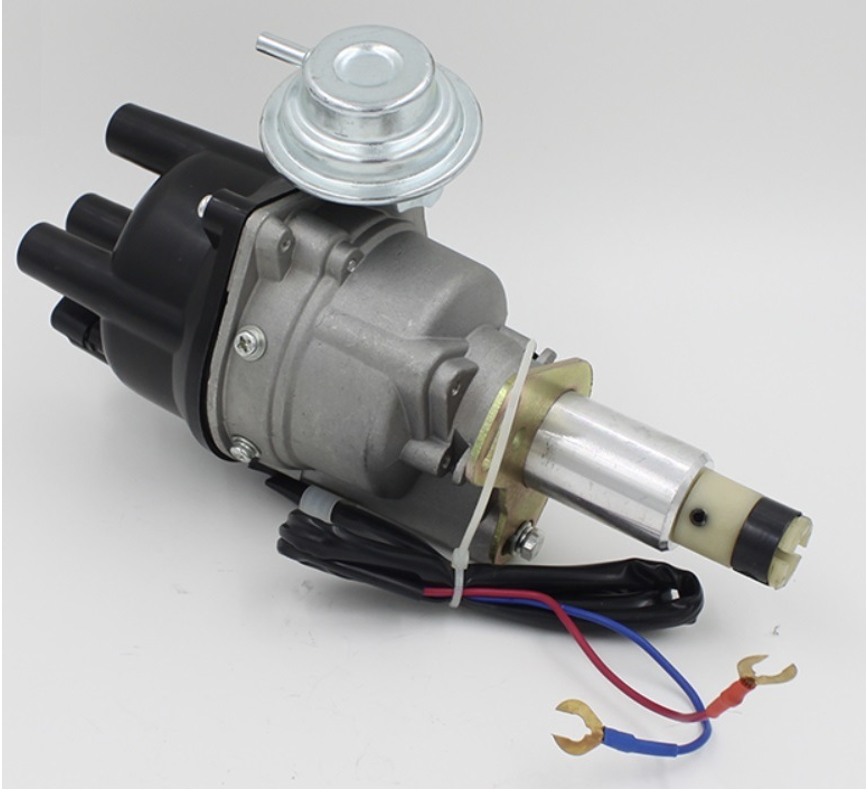
21. Clutch:-
A gadget known as the clutch plays a significant part in the transmission of power from the engine to the transmission. Since the car engine is continually running, the crankshaft never stops rotating. It is utilized to disengage the transfer of power from the engine to the transmission and facilitate the switch of gears. Despite the fact that clutches are available in both manual and automatic transmission, the method of use is totally different.
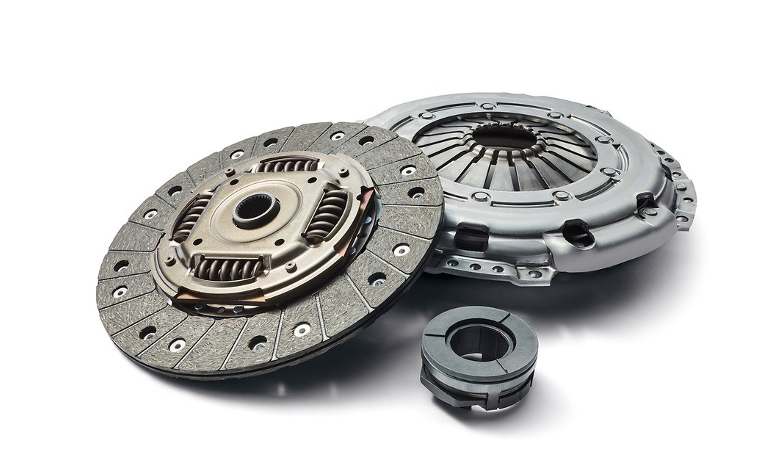
22. Drive Shaft:-
A drive shaft is one of the main parts of your car. It assists with transferring the torque from the transmission to the differential. The driveshaft is otherwise called a propeller shaft. Drive shafts for cars with front-wheel drive comprise of the detachable fixed joint, the inboard constant velocity joint, and the interfacing shaft.
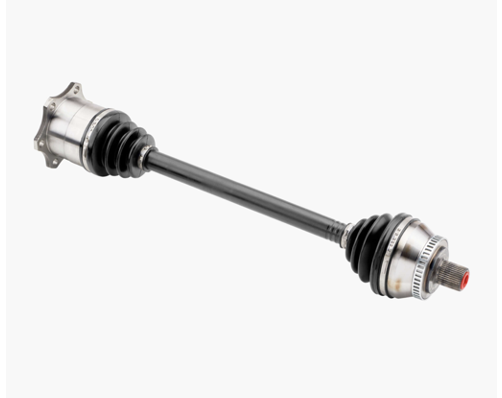
23. Differential:-
The power that is transmitted or sent from the propeller shaft to the rear axle shaft is what the differential is answerable for dividing up and distributing. It is likewise liable for providing the required amount of power to a specific side when one side is under more load.
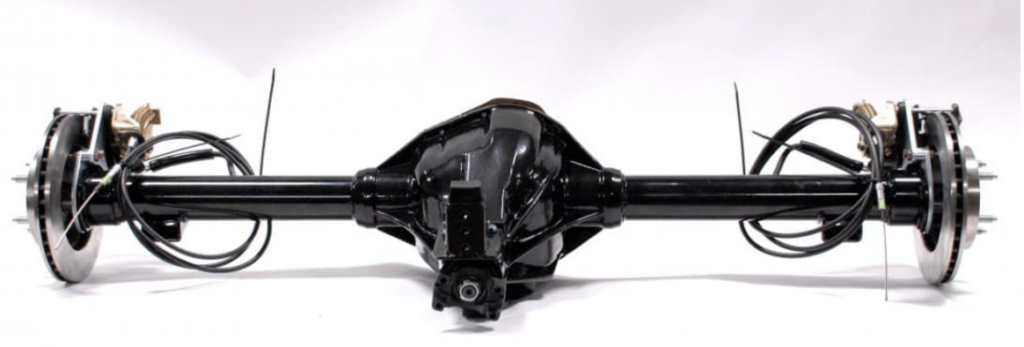
24. Wheel/Tire:-
There are four wheels on each car. Tires, which are black or dark, are the car’s parts that touch the road. Automakers make them out of rubber, and they are loaded up with nitrogen or air.
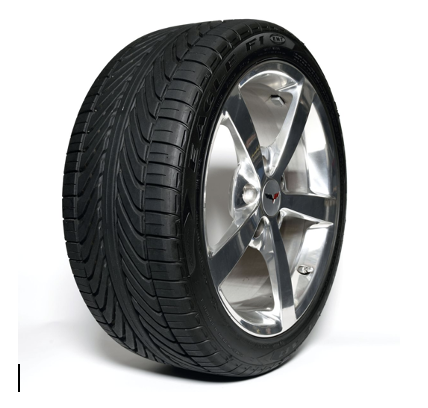
25. Speedometer:-
A speedometer is a speed indication gadget utilized in cars to indicate speed. It is typically combined with a gadget called an odometer that records the distance traveled. The speed is then shown on the speedometer. Modern-day cars by and large have two sorts of speedometer specifically, analog dial and digital display.
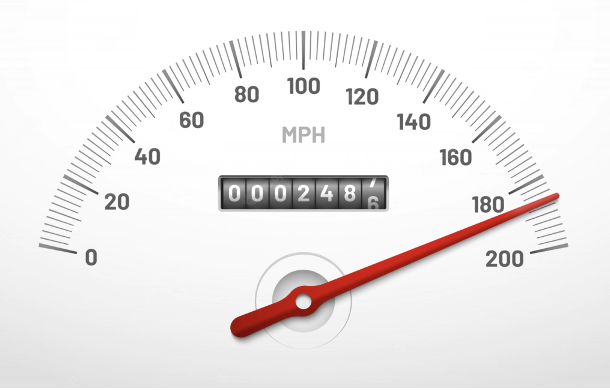
26. Gear Shift:-
The gearshift on cars with a manual transmission is known as a “stick shift.” More often than not, the term “gear shift” alludes to the shift lever on a car with a manual transmission. More often than not, a gear shift is utilized to change or switch gears while the left foot is pressed down on the clutch pedal to disconnect the engine from the drivetrain and wheels.
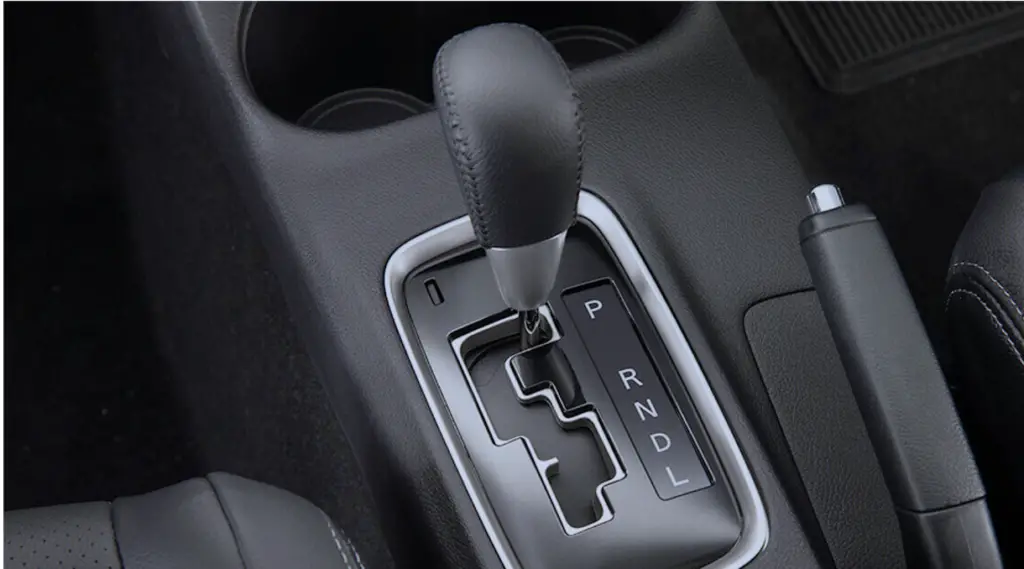
27. Windscreen:-
The front window is the windshield or windscreen. It allows you to see out and shields you from the bad weather. Most modern windshields are made of laminated safety glass, which is a kind of treated glass that is normally made of two curved sheets of glass with a layer of plastic in the middle between them for safety.
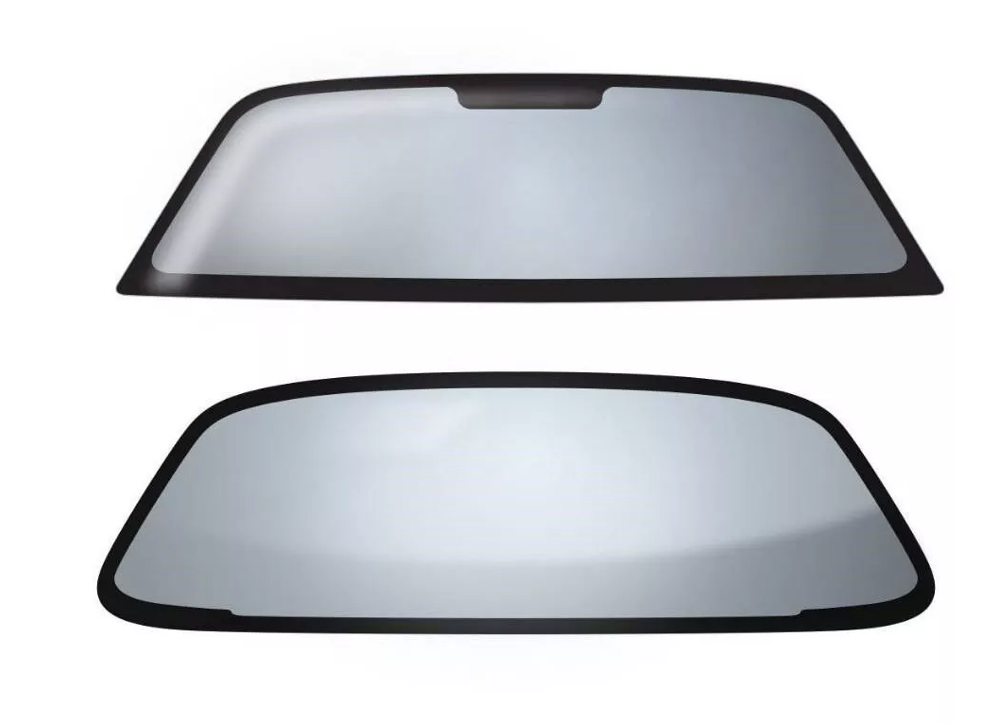
28. Windscreen Wipers:-
Windshield wipers are one of the most reliable parts of a car. Drivers use it to clear the windshield of raindrops, water, ice, snow, or soil, so they can see clearly. At the point when the driver flips the switch, the blade moves up and down in the windshield to clean up raindrops, ice, and different sorts of precipitation.
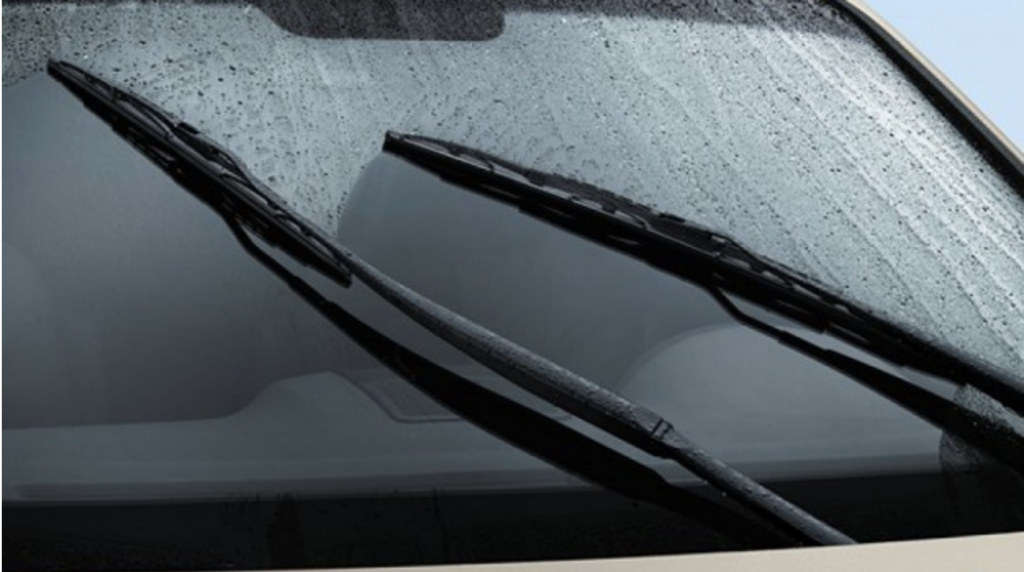
29. Car Hood and Trunk:-
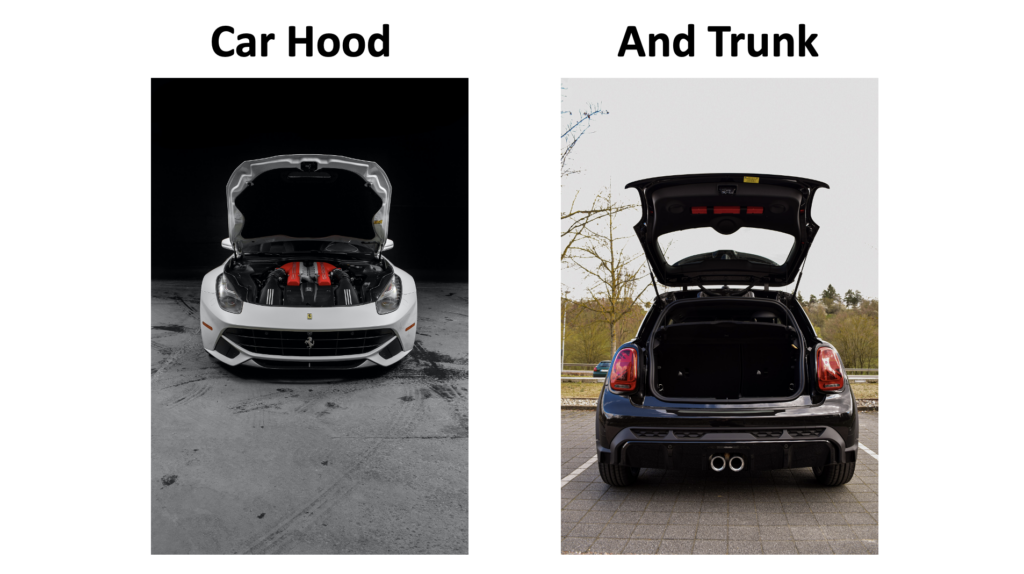
A car hood otherwise called a bonnet is a metal cover that is pivoted and rested on the front of the car. Covering the engine of the car in front-engine vehicles is utilized. A car trunk alludes to the space at the backside of the car utilized as an essential storage area. It is held on by a latch or present day cars even have a hydraulic system attached to the latch.
30. Fuel Guage:-
The fuel gauge is a significant part of the fuel system since it shows how much fuel is in the tank.
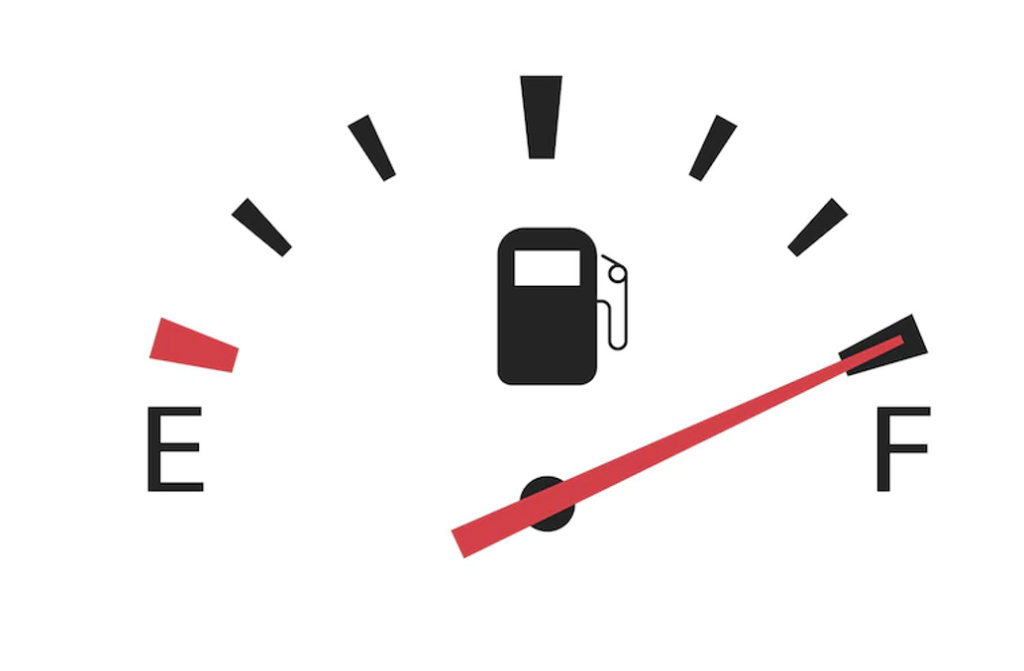
31. Temperature Guage:-
The temperature gauge works with the temperature sensor, which is directly connected or associated with the engine coolant.
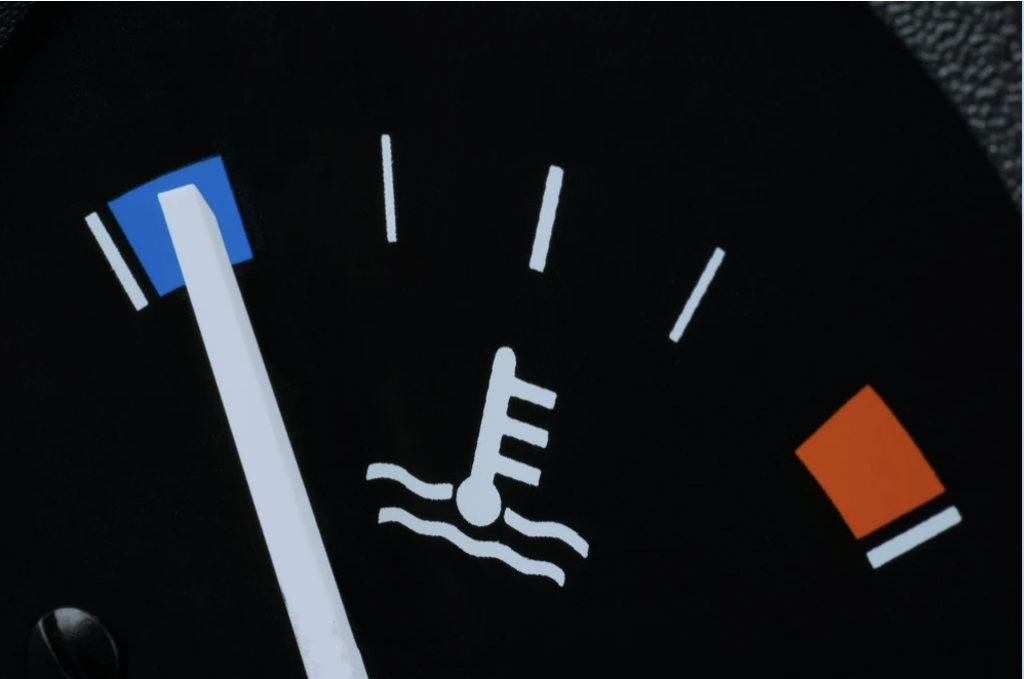
32. Pistons:-
One of the fundamental parts of an engine that moves to and fro is the piston. Most cars have somewhere in the range of four and six cylinders. The speed of the crankshaft and the piston decides the speed of the engine.Pistons help the control of oil flow in the cylinder walls utilizing the oil control ring.
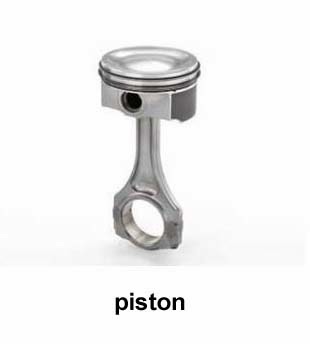
Conclusion:-
Modern cars have a lot of features and secured parts that make driving more secure and more comfortable. You ought to know what various parts of the cars do and how they work. At the point when you go to your mechanic if you have any concerns with your car, you can call out your car parts by their names. Assuming you need the best driving experience, you want to ensure each part gets the care it needs to continue to work right in the right way.

